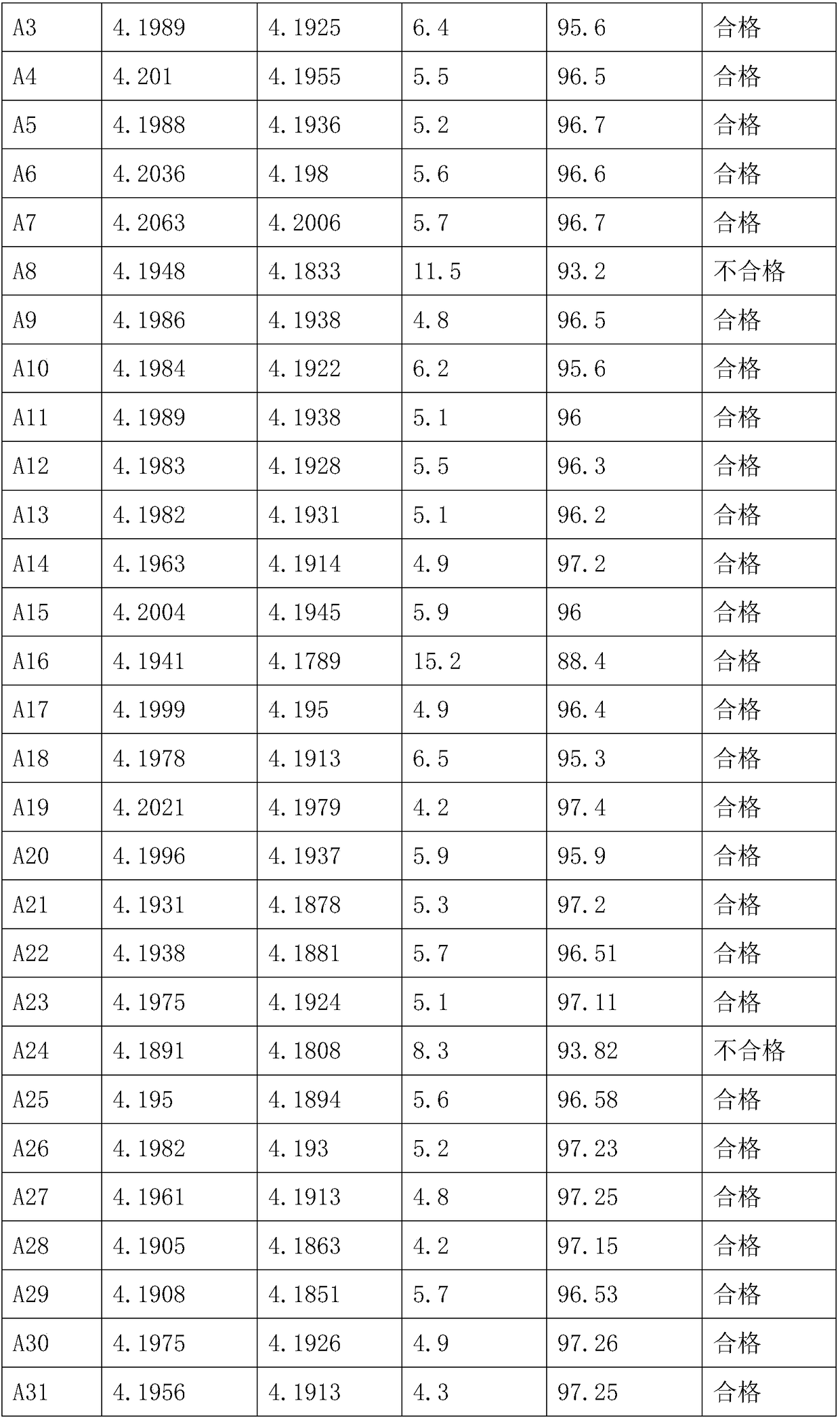Self-discharge detection method for nickel-cobalt-manganese lithium battery
A technology of nickel cobalt lithium manganate and a detection method, which is applied in the direction of measuring electricity, measuring devices, measuring electrical variables, etc., can solve the problems of difficult selection, difficult to accurately pick out, long storage time, etc., so as to prolong the service life and achieve accurate testing. Effective and improve the effect of product quality
- Summary
- Abstract
- Description
- Claims
- Application Information
AI Technical Summary
Problems solved by technology
Method used
Image
Examples
Embodiment 1
[0042] Taking a ternary lithium-ion battery with a capacity of 2.2Ah as an example, first charge and discharge the battery 3 times at a rate of 0.5C, discharge to 3V with a current of 0.3C, and rest for 30 minutes, then discharge to 3V with a current of 0.05C, and rest for 30 minutes , charged to 4.2V with a constant current of 0.1C, the battery was left at room temperature 20°C for 12 hours, and the open circuit voltage was tested and recorded V 1 , the battery stood at a high temperature of 50°C for 48 hours, tested and recorded the open circuit voltage V 2 , calculate W=V 1 -V 2 After that, all the batteries in the group are tested according to the charge retention method
[0043] Table I:
[0044]
[0045]
[0046]
[0047] It can be concluded from Table 1 that when W>7.0, the charge retention rate of the battery is less than 94%, and when k<7, the charge retention rate of the battery is greater than 94%. The batteries numbered A24, A8, and A1 in Table 1 can b...
example 2
[0049]Taking a ternary lithium-ion battery with a capacity of 2.2Ah as an example, first charge and discharge the battery 5 times with a current of 0.5C, discharge to 3V with a current of 0.3C, and leave it for 30 minutes, then discharge it to 3V with a current of 0.05C, and leave it for 50 minutes. Charge the battery to 4.2V with a constant current of 0.1C, let the battery stand at room temperature 20°C for 15 hours, test and record the open circuit voltage V 1 , the battery was left at a high temperature of 50°C for 60 hours, and the open circuit voltage V was tested and recorded 2 , calculate W=V 1 -V 2 After that, test the charge retention data of all the batteries in the group according to the charge retention method, as shown in Table 2:
[0050] Table II:
[0051]
[0052]
[0053] It can be concluded from Table 2 that when W>10.0, the charge retention rate of the battery is less than 94%, and when W<10, the charge retention rate of the battery is greater than ...
PUM
 Login to View More
Login to View More Abstract
Description
Claims
Application Information
 Login to View More
Login to View More - R&D
- Intellectual Property
- Life Sciences
- Materials
- Tech Scout
- Unparalleled Data Quality
- Higher Quality Content
- 60% Fewer Hallucinations
Browse by: Latest US Patents, China's latest patents, Technical Efficacy Thesaurus, Application Domain, Technology Topic, Popular Technical Reports.
© 2025 PatSnap. All rights reserved.Legal|Privacy policy|Modern Slavery Act Transparency Statement|Sitemap|About US| Contact US: help@patsnap.com



